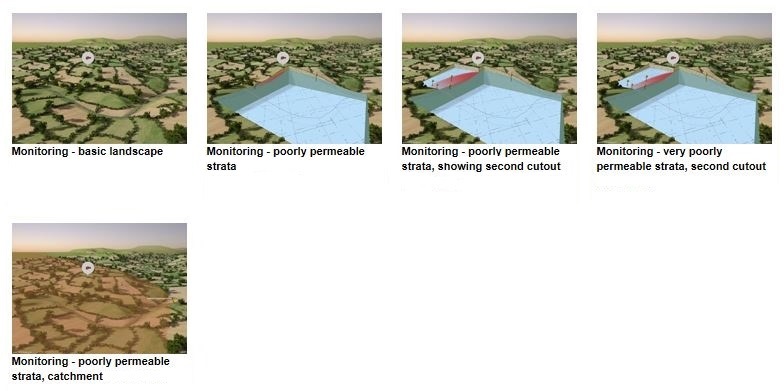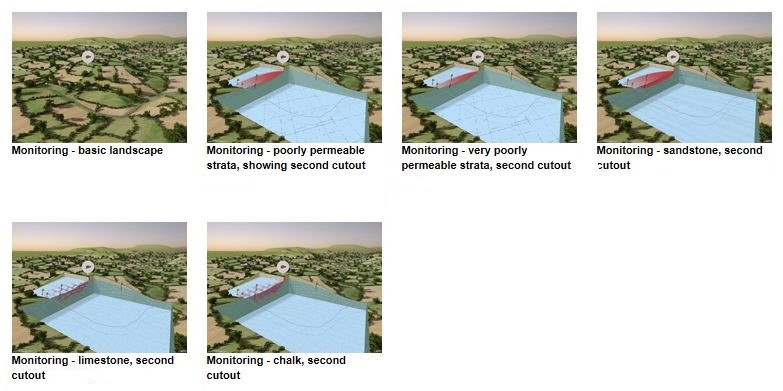Due to different plume diffusion in varying strata, monitoring points have to be considered for special conditions. This section illustrates how pollutants enter groundwater and streambeds through different strata (sandstone, limestone, chalk, poorly permeable and very poorly permeable), how this influences monitoring techniques and also shows a comparative illustration in "Monitoring different aquifers". "Monitoring at different depths" shows how piezometers at varying depths (combined or in separate monitoring points) increase the chance of the detection of pollutants.
Monitoring - poorly permeable aquifer
In a poorly permeable aquifer, it is difficult to ensure that monitoring points will detect a pollution plume, although a surface monitoring point may be better. Download all images and text (zip file).

Monitoring - sandstone
The increased width of plume means that observation boreholes are more likely to detect a pollution plume. Download all images and text (zip file).

Monitoring - limestone
In limestone, the plume width and the way it moves through the aquifer makes it very difficult to ensure that the
pollution plume will be detected. Download all images and text (zip file).

Monitoring - chalk
In chalk, the plume width and the way it moves through the aquifer makes it very difficult to ensure that the pollution plume will be detected. Download all images and text (zip file).

Monitoring in different types of aquifer (scenario 1)
Comparing the size and shape of pollution plumes in different types of aquifer. Download all images and text (zip file).

Monitoring in different types of aquifer (scenario 2)
Comparing the size and shape of pollution plumes in different types of aquifer. Download all images and text (zip file).

Monitoring at different depths
Piezometers at different depths increase monitoring success. Download all images and text (zip file).
